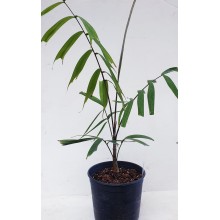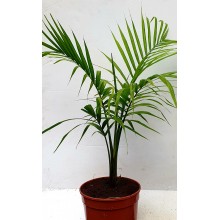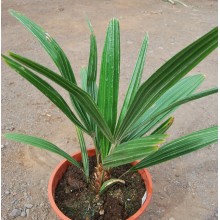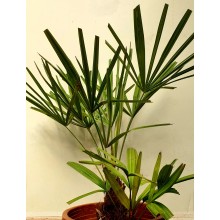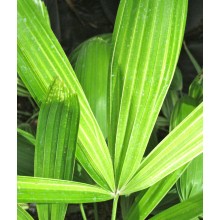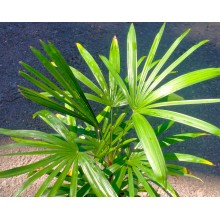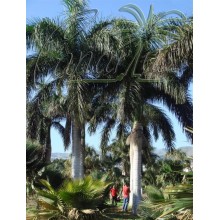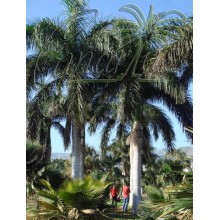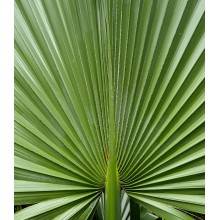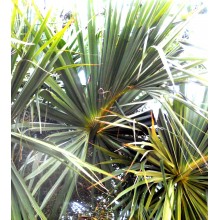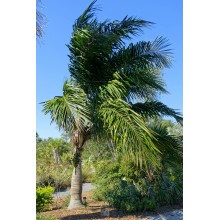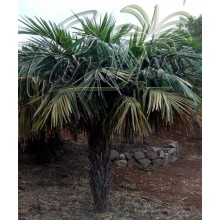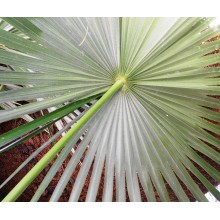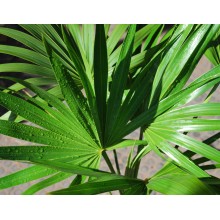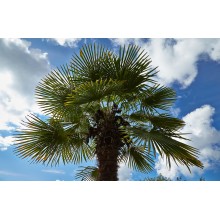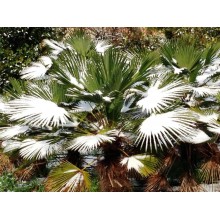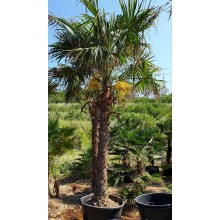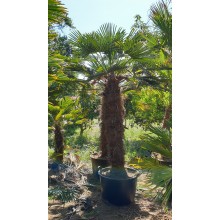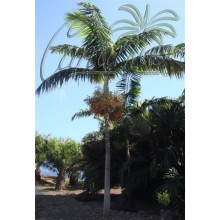Palmiers Il y a 101 produits.

La famille des palmiers, Arecaceae ou Palmae, comprend environ 2. 400 espèces indigènes aux climats chauds du monde, allant des espèces tropicales délicates aux palmiers résistant au froid. Quelques palmiers peuvent être plantés à l'extérieur en Europe centrale et tiennent bien au gel, bien en dessous de -10 ° C (14 F). Ceux qui vivent dans les pays méditerranéens peuvent se développer un plus grand nombre d'espèces à l'extérieur. Certains producteurs des zones côtières d'Europe du Sud élèvent maintenant des collections de palmiers en plein air avec plus de 100 espèces.
Canarius ne va expédier que des palmiers robustes, cultivés dans des petits pots pour réduire les coûts d'expédition et les problèmes de manutention. Il vous faut donc les transplanter dans des pots plus grands peu de temps après avoir reçu le paquet. Soyez prêt à leur donner le meilleur. Certains palmiers peuvent supporter la neige, certains peuvent vivre à l'intérieur ou dans des pots, et certains sont très tropicaux. Il suffit de choisir celui qui peut prospérer dans vos conditions.
Qu'est-ce que les palmiers peuvent se développer dans votre région? Lisez notre Liste des palmiers résistants au froid pour l'Europe. Visitez Canarius Blog pour en savoir plus sur nos palmiers. Vous verrez les photos des pépinières: des palmiers de différents types de Nouvelle-Zélande, des Bottle Palms avec une qualité supérieure de racine.
-
Ptychosperma pullenii
Ptychosperma pullenii
Small or Mid- sized palm from Papua, with red new leaves, which are very elegant, with drooping segments, blunt at the tip as fishtails. It is very adaptable to pot cultivation.
44,20 € -
Ravenea rivularis
Ravenea rivularis
Popular feather palm native to river borders of Southern Madagascar, easily grown in the Mediterranean.
53,00 € -
Rhapidophyllum hystrix
Rhapidophyllum hystrix
The needle palm is the cold-hardiest of all palms. It is a clumping, short fan palm, with fibrous trunks, armed with long black spines. Leaves are dark green and glossy .
72,00 € -
Rhapidophyllum hystrix - Specimen
Rhapidophyllum hystrix - Specimen
8 years old, branched. h= 80 cm - Son h= 35 cm. The needle palm is the cold-hardiest of all palms. It is a clumping, short fan palm, with fibrous trunks, armed with long dark spines. Leaves are dark green and glossy.
288,00 € -
Rhapis excelsa cv. Koban Nishiki - Variegated
Rhapis excelsa cv. Koban Nishiki - Variegated
Clustering dwarf bamboo-like palm suitable as a house plant. Rhapis robusta is a new dwarf Rhapis from wet forests of southern China. The variegated clone of Rhapis Koban is different from most Variegated Rhapis. Its shorter leaves show no variegated stripes, while they boost a diffuse white tone reminiscent of Aspidistra Asa Ahi.
56,00 € -
Roystonea regia - Cuban Royal Palm
Roystonea regia - Cuban Royal Palm
h= 30-50 cm - Cont. 10 cm. The Cuban Royal Palm is one of the most beautiful of all palms. Native to the savannas and open forests of Cuba and surrounding territories.
43,50 € -
Roystonea regia - LARGE
Roystonea regia - LARGE
The height of these cuban royal palms is about 2 m, rootbound in pots, with bases of 5-8 cm. We will cut or bend the leaves to a total height of 90 cm and it will resprout back in about 2 months, taller than before !
61,00 € -
Sabal minor
Sabal minor
This is the smallest species in the genus Sabal and one of the cold-hardiest. It is native to deciduous forests in the SE U.S.A.
31,80 € -
Sabal yapa - Large
Sabal yapa - Large
h= 30-60 cm - Cont. 22 cm. Caribbean Sabal palm with grey-blue leaves with a bright cream-yellow costa. Juveniles have very wide segments, while adult palms have deeply split blades with thin segments. This palm can take short light frosts. It is a bit more hardy than the similar species Sabal mauritiiformis.
44,20 € -
Syagrus amara
Syagrus amara
This solitary palm is a very elegant tree with dark green arching leaves and a ringed trunk with a wide base. It does well in windy coastal conditions. Syagrus amara is the only Syagrus native to the Caribbean Islands and not to South America and has the largest seeds in the genus,
42,50 € -
Syagrus schizophylla - Large
Syagrus schizophylla - Large
Small-sized Syagrus palm , with glossy feather leaves with stiff, leathery segments. Tolerant of neglect, and light frosts. It is suitable to indoor and pot colture.
40,00 € -
Thrinax radiata
Thrinax radiata
Small sized ornamental palm from the Caribbean shores, with rounded fans of glossy leaves. It is very eay to grow and despite its tropical origin, it can stand cool temperatures (with no frost).
72,00 € -
Trachycarpus fortunei
Trachycarpus fortunei
The most popular cold-hardy palm of all times. This species will grow outdoors with little effort almost anywhere in Europe.
38,20 € -
Trachycarpus fortunei 'Wagnerianus'
Trachycarpus fortunei 'Wagnerianus'
This palm is a best seller in Europe. It is a small frost hardy palm with small and stiff fan leaves - only about 60 cm across. It is not known in the wild, only in cultivation, because it is compact cultivar of Trachycarpus fortunei, selected in China by Japanese horticolturists. It can take snow and frost, surviving to -15 C or -25 C, depending on local...
68,00 € -
Trachycarpus latisectus - ADULT! 195cm trunk
Trachycarpus latisectus - ADULT! 195cm trunk
Trachycarpus latisectus is one of the most attractive palms in this frost-hardy genus. Its leaves have exceptionally wide segments and a thick, ringed trunk, coated with reddish-brown fibers when young. We offer some fantastic tall adult specimes which are seldom found in Europe.
948,00 € -
Trachycarpus wagnerianus ADULT! - 175 cm trunk
Trachycarpus wagnerianus ADULT! - 175 cm trunk
This palm is a best seller in Europe. It is a small frost hardy palm with small and stiff fan leaves - only about 60 cm across. It is not known in the wild, only in cultivation, because it is compact cultivar of Trachycarpus fortunei, selected in China by Japanese horticolturists. It can take snow and frost, surviving to -15 C or -25 C, depending on local...
538,00 € -
Trithrinax brasiliensis
Trithrinax brasiliensis
Beautiful palm from "colder" Brazil, with flat fan leaves and long spiny leaf sheaths.
19,20 € 24,00 €Prix réduit ! -
Veitchia joannis
Veitchia joannis
A beauty of nature! This tall, elegant veitchia palm is native to to Fiji, and Tonga Islands. It is fast, beautiful, elegant, plumose, with showy red fruits.
19,30 €
Pour le moment, il ya peu de produits dans cette catégorie Palmiers
















